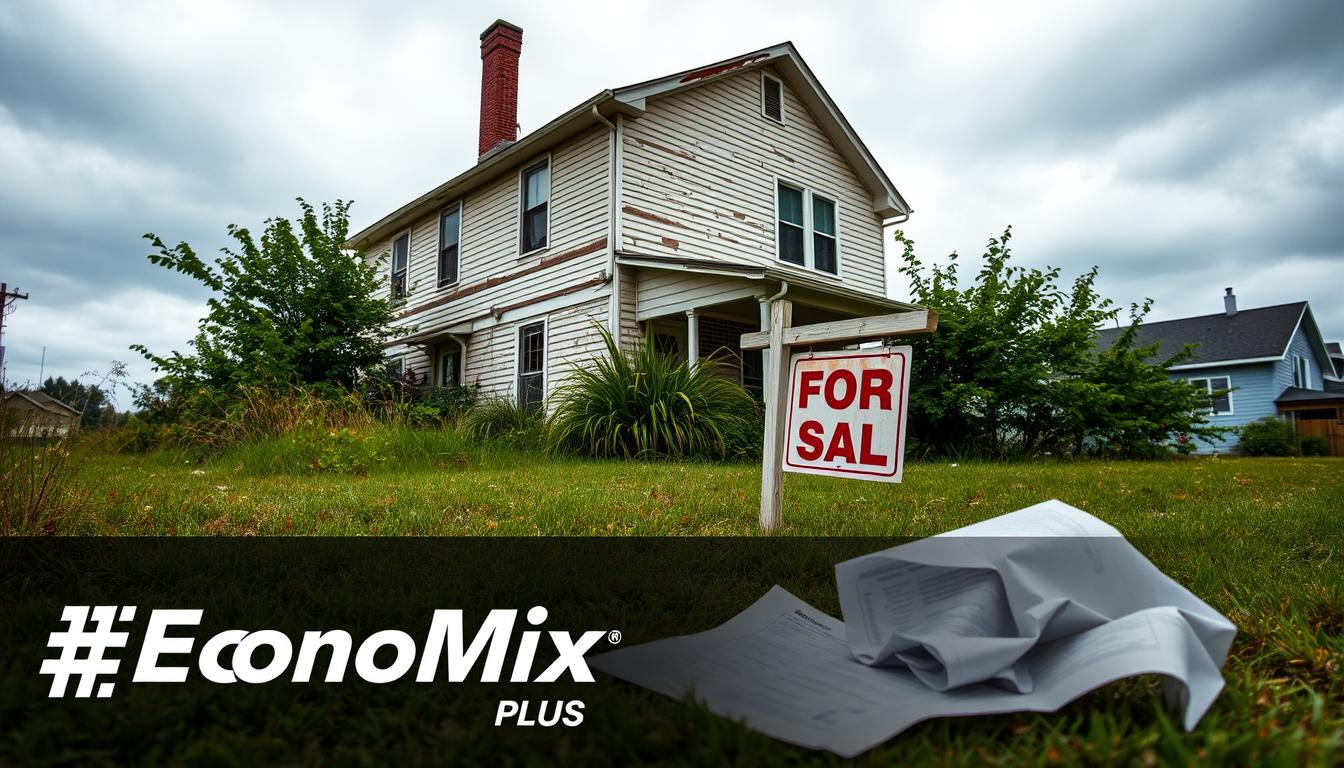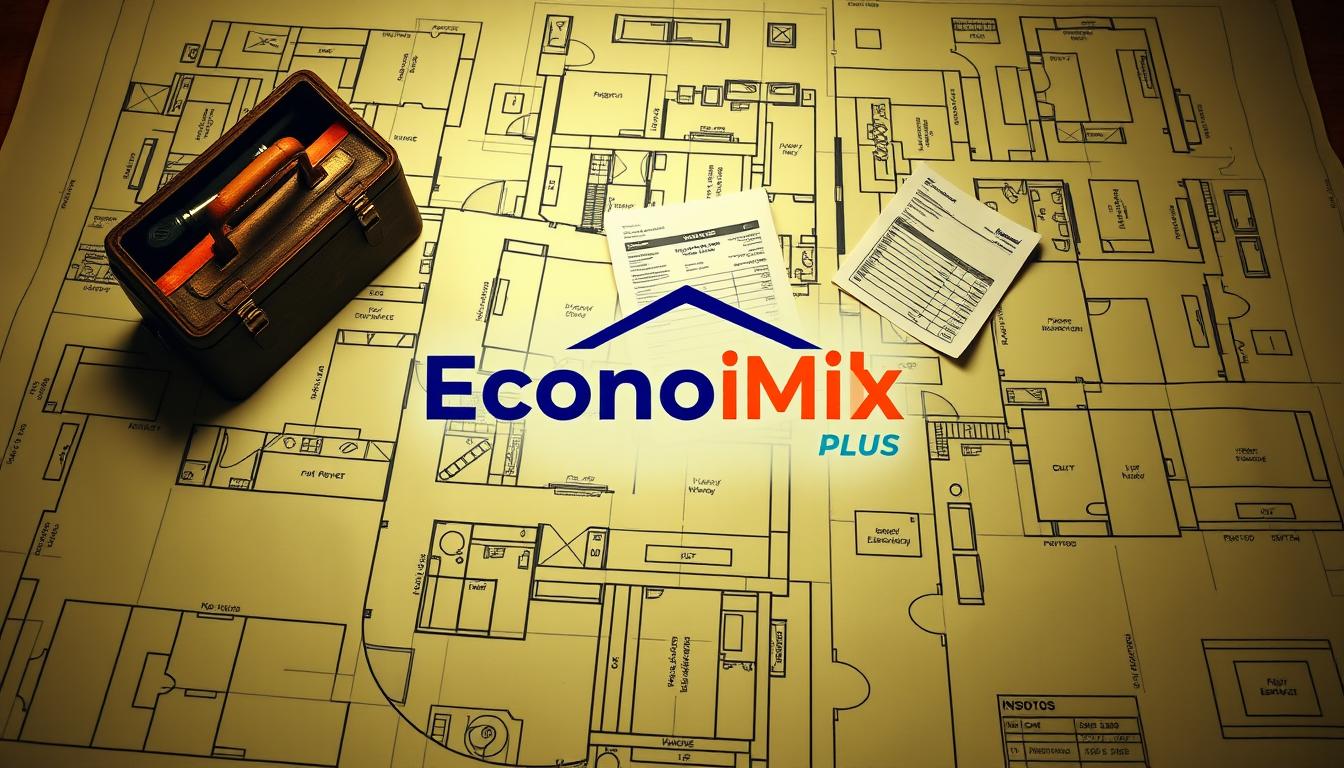You’ve heard it a thousand times: property investments are stable, reliable, and a cornerstone of wealth-building. But what if that reputation hides risks even seasoned investors overlook? Consider Dr. James M. Dahle’s story: a 34% loss on a rental property due to bad timing, surprise repairs, and management missteps. His experience isn’t unique—it’s a wake-up call.
Market fluctuations, hidden costs, and poor planning can turn a “sure thing” into a financial sinkhole. For example, buying at the peak of a cycle or underestimating maintenance expenses often leads to negative cash flow. Even location, the golden rule of real estate, isn’t foolproof if demand shifts unexpectedly.
This article unpacks why education and strategy matter more than blind trust in real estate’s safety. We’ll explore real-life failures, from overleveraged flips to neglected due diligence, and how to sidestep them. Knowledge isn’t just power—it’s profit protection.
Key Takeaways
- Timing and market research are critical to avoiding losses.
- Hidden costs like repairs or vacancies can derail returns.
- Effective management impacts long-term profitability.
- Overconfidence in location or demand often backfires.
- Education reduces exposure to common pitfalls.
Understanding the Risks Beyond a Safe Reputation
Property ownership feels like a fortress of security—until hidden cracks appear. Many assume physical assets like houses guarantee stability, but estate investments often involve complex variables that erode profits silently. Consider a Phoenix rental property generating $2,500 monthly rent. At first glance, that covers a $2,000 mortgage. Now factor in vacancies, repairs, and property taxes—suddenly, cash flow turns negative.

Identifying the Hidden Pitfalls in Property Investment
Three stealthy factors sabotage returns:
- Vacancy gaps: A 2-month empty period wipes out 16% of annual income
- Maintenance creep: Roof replacements cost $8,000-$16,000—equivalent to 4-8 months’ profit
- Tax traps: Depreciation recapture can surprise sellers during money house transactions
Why Perceived Safety Can Be Misleading
Rental income comparisons create false confidence. A Chicago investor learned this when rising insurance premiums and HOA fees turned a 6% cap rate into 3.2% actual returns. Surface-level analysis misses these layered costs. Detailed due diligence—like checking utility history or zoning changes—often reveals red flags invisible during walkthroughs.
One Florida case study shows how overestimating demand led to 11-month vacancies. The lesson? Treat every investment like a live wire—respect its hidden voltage through meticulous planning.
Why do some people lose money in real estate despite its safe reputation
Imagine buying a rental home with perfect numbers, only to watch profits vanish. Dr. James M. Dahle’s $215,000 Arizona purchase turned into a $142,000 sale—a 34% loss. Hidden costs like $18,000 in emergency plumbing repairs and $12,000 in realtor fees ate the equity. Market timing sealed the fate: he sold during a local construction boom that flooded the area with competing rentals.

Real-Life Case Studies and Lessons Learned
A 2017 Miami flip shows similar patterns. Investors paid $450,000 for a beach condo, spent $65,000 renovating, then sold for $430,000 after 14 months. Why? The market shifted—new short-term rental restrictions slashed property value by 20%. Their $85,000 loss included $15,000 in carrying costs and 7% transaction fees.
Breaking Down the Financial Setbacks
Three factors crushed returns in both cases:
- Time-sensitive risks: Holding periods extended as demand dropped
- Compounding costs: Every month vacant added $2,000+ in mortgage/utilities
- Basis miscalculations: Original purchase prices didn’t account for tax reassessments
These stories reveal a pattern: overconfidence in market trends blinds investors to exit strategies. As one portfolio manager notes: “Your first loss is your best teacher—if you track where the money actually went.” Review settlement statements line-by-line next time—you’ll spot red flags faster.
Poor Purchase Timing and Market Bubbles
Market timing can be a silent wealth killer. During the 2006 housing bubble, investors who bought homes at peak prices faced devastating losses. Las Vegas saw median values drop 50% by 2012—many properties took over a decade to regain their pre-crisis capital.

Buying at the Peak: The Cost of Market Timing
Virginia’s Fairfax County offers a cautionary tale. Buyers who purchased $750,000 homes in 2006 sold them for $580,000 just three years later. The math stings: a 23% loss plus $45,000 in mortgage payments and taxes. Why? Euphoric markets tempt investors to ignore cyclical patterns.
How Economic Downturns Exacerbate Losses
Recessions hit property values like dominoes. During the 2008 crisis, Phoenix saw 90-day foreclosure timelines stretch to 18 months. Sellers hemorrhaged $1,200 monthly in income and upkeep costs. Even “safe” markets like Denver took 7 years to recover 2007 prices.
Smart strategies matter. Track economic recession indicators like job growth and construction permits. Avoid markets where prices outpace local wage increases by 15%+. Patience pays—waiting for cyclical dips often preserves capital better than chasing trends.
Overpaying for Property: Negotiation Gone Wrong
A $10,000 difference at closing can decide your financial future in real estate. In 2019, two nearly identical houses sold for $300,000 in Atlanta—one investor negotiated down to $285,000, while another paid full price. Over five years, the first earned $45,000 more in net profits through better cash flow and equity growth.

Recognizing Overvalued Opportunities
Overpaying by just 5% creates ripple effects. A $400,000 purchase becomes $420,000 after fees—adding $150/month to mortgage payments. Over a decade, that’s $18,000 lost to interest alone. A San Diego case study shows how paying 8% above market value turned a rental into a negative cash flow disaster within 18 months.
Three negotiation traps to avoid:
- Emotional bidding wars that inflate prices beyond repair budgets
- Ignoring recent comparable sales showing downward trends
- Accepting “as-is” conditions without pricing repair contingencies
Smart buyers use tools like automated valuation models (AVMs) and local permit data to spot overpriced listings. One agent reduced a client’s offer by 12% after discovering undeclared foundation issues—saving $48,000 upfront. Always treat the purchase price as your profit ceiling: every dollar saved compounds over years of ownership.
“The best deals aren’t found—they’re negotiated. Your first offer should never be your last.”
Failure to Account for Hidden Costs and Maintenance
That spreadsheet showing positive cash flow? It might be missing half the story. Property expenses often lurk beneath surface-level calculations, quietly draining returns over time. A Dallas rental owner discovered this when $9,000 in annual HOA fees and flood insurance erased 40% of projected profits.

Unexpected Repairs and Upkeep Expenses
Common oversights that sabotage profitability:
- Roof replacements averaging $11,500 (nearly 6 months’ rent)
- Emergency plumbing fixes costing $3,000-$15,000 per incident
- Vacancy periods adding $2,800/month in lost income + mortgage
| Cost Category | Average Annual Impact | Real-World Example |
|---|---|---|
| Insurance Premiums | $1,200-$4,800 | Florida condo fees spiked 300% post-hurricane |
| Tax Reassessments | 5-15% increase | Austin owners faced $8,400 jumps after renovations |
| Landscaping | $600-$2,400 | Tenant lease required weekly pool maintenance |
Minor costs compound way faster than most anticipate. A $200 monthly pest control bill becomes $24,000 over a decade—enough to fund a kitchen remodel. One Chicago landlord lost $18,000 in returns when basement waterproofing delayed a tenant move-in by 4 months.
“Budget for repairs you can’t see—foundation issues, HVAC aging, and code updates. They’ll find you eventually.”
Always create two budgets: one for expected costs, another with 15-20% buffer for surprises. Review utility histories and service records before finalizing your price. This proactive approach separates profitable rentals from money pits.
Rental Income Shortfalls and Vacancy Periods
Empty units drain profits faster than most realize. A Houston investor learned this when their property sat vacant for 18 months, bleeding $4,200 monthly in mortgage payments, taxes, and maintenance. What began as a temporary gap became a $75,600 cash flow nightmare.
Managing Cash Flow Challenges Over Time
Rental properties thrive on predictable income streams. When rent stops flowing, fixed costs don’t pause. Consider these monthly drains:
- Mortgage payments consuming 60-80% of potential income
- Property taxes averaging 1-3% of home value annually
- Ongoing maintenance like lawn care or pest control
One San Antonio landlord faced 14 months vacancy after pricing units 15% above market rates. Their $2,800 monthly carrying costs erased $39,200 in savings.
The Impact of Extended Vacancy Periods
Three factors often prolong vacancies:
- Overpricing relative to neighborhood comparables
- Poor marketing strategies failing to reach target tenants
- Deferred repairs making properties less appealing
Each empty month compounds losses. A $2,500 rent property losing six months’ income needs 18 months just to break even. Smart investors buffer savings equal to 6-12 months of expenses.
“Vacancy reserves aren’t optional—they’re your financial airbag when tenants vanish.”
Proactive strategies reduce risks. Screen tenants rigorously using income verification tools. Adjust pricing quarterly using rental analytics software. Partner with local contractors for swift turnover repairs. Your maintenance plan should include vacancy-specific budgets—because silent properties still demand payments.
The Challenges of Accidental Landlording
Owning a home you never planned to rent can feel like a part-time job you didn’t apply for. Many inherit properties or relocate without selling, suddenly thrust into managing homes from afar. Take the case of managing a rental 2,218 miles away—time zones, local regulations, and emergency repairs become daily hurdles.
Navigating Remote Property Management
Distance amplifies every issue. A leaking roof in Seattle requires coordinating contractors from Miami, often at premium prices. Self-managing saves fees but demands 15-20 hours monthly—time most accidental landlords don’t have. Property management companies charge 8-12% of rent, yet vetting them remotely risks poor service.
| Task | Self-Managed Cost | Management Company Cost | Time Required |
|---|---|---|---|
| Tenant Screening | $0 (DIY) | 1 month’s rent | 6 hours vs. 2 hours |
| Emergency Repair | $1,200 (local plumber) | $1,800 (marked up) | 3 days vs. 1 day |
| Lease Renewals | $40 (online forms) | $300 | 4 hours vs. 30 minutes |
Balancing Personal Life with Landlord Duties
Juggling a career and midnight tenant calls drains productivity. One teacher lost $9,000 in opportunities for promotions due to constant property-related distractions. Others face strained relationships—63% of accidental landlords report increased family stress in surveys.
Practical solutions exist. Automate rent collection through platforms like Zillow Rental Manager. Schedule quarterly inspections with local handymen. Use companies specializing in remote maintenance to handle emergencies swiftly. Your homes shouldn’t hijack your life—systems create breathing room.
“Accidental landlording is like parenting a house you never wanted. Set boundaries early, or it’ll consume you.”
Economic and External Factors Affecting Property Value
A hurricane can erase decades of equity in hours. After Hurricane Maria, Puerto Rico’s real estate market saw values plummet 40% in coastal areas. Properties lingered unsold for years—even at 60% discounts. This demonstrates how external shocks rewrite investment equations overnight.
When Forces Beyond Control Reshape Markets
Natural disasters aren’t isolated events—they trigger chain reactions. Flood zones expand, insurance becomes unaffordable, and tax bases collapse. Three critical impacts:
- Demand shifts to safer regions, leaving owners stranded
- Rebuilding costs exceed insurance payouts by 20-35%
- Long-term sale prices stagnate due to risk perception
Local economic shifts compound these risks. Detroit’s auto industry decline saw home values drop 67% from 2000-2012. Investors who bought during the exodus faced 20-year recovery timelines. Contrast this with Austin’s tech boom—home prices tripled since 2010.
| Event | Property Value Impact | Recovery Time |
|---|---|---|
| Hurricane Maria (2017) | -40% | 7+ years |
| California Wildfires (2018) | -22% in burn zones | 3-5 years |
| Detroit Auto Crisis (2008) | -67% | Ongoing |
Build resilience by diversifying across markets and budgeting for climate risks. Analyze FEMA flood maps and local job growth trends before purchasing. In real estate investing, understanding regional vulnerabilities protects your money real estate portfolio from black swan events.
“Plan for the unexpected—what’s unthinkable today could be your reality tomorrow.”
Comparing Real Estate Risks with Other Investment Types
Portfolios thrive on balance—but how does real estate stack up against stocks and savings? While equities swing wildly with daily news cycles, physical properties anchor wealth through tangible utility. Yet both carry distinct risks real estate investors must weigh carefully.
Stability in Tangible Versus Paper Assets
Stocks can lose 50% value in months—like the 2022 tech crash. Real estate values typically dip 5-15% during recessions, rebounding faster due to housing demand. Leverage magnifies this stability: 20% down payments control 100% of a property, while stock margin loans rarely exceed 50%.
Consider these contrasts:
- Average stock volatility: 20% annual price swings
- Residential property volatility: 3-5% annual shifts
- Inflation protection: Rent hikes outpace CPI 67% of the time
Building Wealth That Outlasts Market Cycles
Private real estate offers unique advantages for long-term growth. Fixed-rate mortgages lock in costs as rents rise—a hedge against inflation stocks can’t match. Government policies like 1031 exchanges and depreciation rules further tilt scales toward property investments.
| Factor | Real Estate | Stocks | Bank Savings |
|---|---|---|---|
| Leverage Potential | 5:1 (80% LTV) | 2:1 (margin) | None |
| Inflation Shield | High (rents/assets) | Moderate | Negative |
| Tax Benefits | Depreciation, 1031 | Capital gains | Minimal |
Financial Samurai notes: “Real estate stocks offer liquidity but lack control—direct ownership lets you make money real through forced appreciation.” Blend both: 60% physical properties, 30% equities, 10% cash creates resilience against most economic storms.
Conclusion
Navigating the estate market requires balancing opportunity with vigilance. Case studies reveal recurring patterns: overpaying during frenzied markets, underestimating repair budgets, and misjudging vacancy risks. Each misstep erodes cash flow—the lifeblood of sustainable property investments.
Strategic planning counters these threats. Analyze interest rates and local job growth before buying. Track maintenance histories like forensic accountants. Build reserves for surprise assessments—climate risks and zoning changes now impact values faster than ever.
Successful estate investing demands treating properties as evolving assets, not static purchases. Learn from Phoenix investors who recovered losses through value-add renovations. Study Miami flippers who adapted to rental restrictions by shifting strategies.
Your playbook? Research exhaustively, budget conservatively, and monitor market pulses quarterly. Protect your money real assets by anticipating both predictable costs and black swan events. With disciplined execution, property remains a wealth-building powerhouse—but only for those who respect its complexities.














